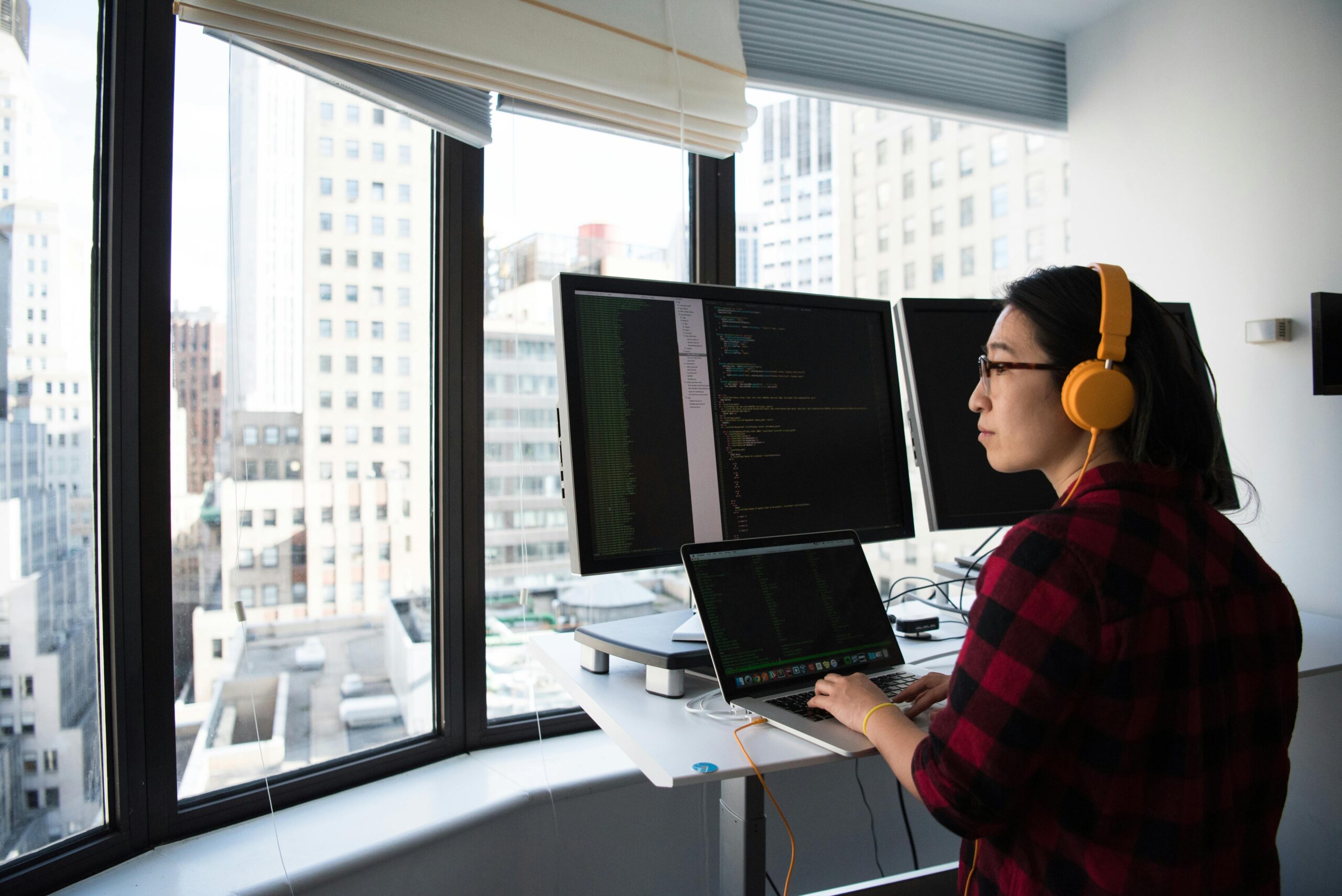As more people become aware of the health risks associated with prolonged sitting, standing desks have surged in popularity. Whether in corporate offices or home workspaces, the demand for ergonomic solutions has driven a shift towards standing desks and related accessories. But why are so many individuals making the switch?
In this article, we’ll explore the benefits of standing desks and answer common questions, such as how high a standing desk should be, how to stand correctly, and whether standing desks help burn more calories.
Benefits of a Standing Desk

Switching to a standing desk comes with several advantages:
- Improved Posture. Reduces the risk of slouching and promotes better spinal alignment.
- Increased Energy Levels. Standing encourages better circulation, reducing feelings of fatigue.
- Reduced Risk of Chronic Diseases. Studies suggest that prolonged sitting is linked to heart disease, diabetes, and obesity.
- Enhanced Productivity. Many users report better focus and engagement when using a standing desk.
- Caloric Burn. Standing burns more calories than sitting, contributing to weight management.
How High Should a Standing Desk Be?

To maintain proper ergonomics, your standing desk should be adjusted to a height where:
- Your elbows are at a 90-degree angle when typing.
- Your computer screen is at eye level to prevent neck strain.
- Your wrists remain straight and neutral to avoid discomfort.
A general rule of thumb is:
- For individuals around 5’4” to 5’7” (162-170 cm), the desk height should be around 39-42 inches (99-107 cm).
- For those 5’8” to 6’1” (173-185 cm), aim for a height of 42-45 inches (107-114 cm).
- Taller users over 6’2” (188 cm) may need desks set at 45 inches (114 cm) or higher.
How to Stand at a Standing Desk
Proper posture is key when using a standing desk to avoid discomfort and fatigue:
- Keep your feet shoulder-width apart for balance.
- Maintain a neutral spine with shoulders relaxed.
- Engage your core muscles to support your lower back.
- Shift weight between legs occasionally to avoid stiffness.
- Wear comfortable, supportive shoes to reduce strain on your feet.
How Long Should You Stand at a Standing Desk?
Standing all day is just as problematic as sitting all day. The ideal approach is to alternate between sitting and standing:
- Start with 30-60 minutes of standing at a time.
- Aim for a 1:1 or 2:1 ratio of sitting to standing throughout the day.
- Listen to your body—if you feel discomfort, take a break or change positions.
- Use an anti-fatigue mat to reduce pressure on your feet.
Does a Standing Desk Burn More Calories?

Yes! Standing burns more calories than sitting:
- Sitting burns about 60-70 calories per hour.
- Standing burns about 100-120 calories per hour.
- Over time, this can contribute to weight management and improved metabolism.
- For even more benefits, consider using a standing desk treadmill to incorporate movement into your routine.
Standing Desk Converter
A standing desk converter is a great option if you’re not ready to invest in a full-standing desk. These adjustable platforms sit on top of your existing desk and allow you to switch between sitting and standing easily.
Benefits of a Standing Desk Converter
- More affordable than a full-standing desk.
- Easy to install and use.
- Adjustable height settings to suit different users.
- Space-saving and ideal for small offices or home setups.
Standing Desk Treadmill

For those looking to increase movement while working, a standing desk treadmill is an excellent investment. It allows you to walk at a slow pace while working, promoting circulation and boosting energy levels.
Benefits of a Standing Desk Treadmill
- Helps burn more calories than standing alone.
- Reduces stiffness and improves blood flow.
- Keeps you active without disrupting productivity.
Standing desks are more than just a trend; they offer numerous health and productivity benefits.
By incorporating standing into your work routine, adjusting your desk to the proper height, and maintaining good posture, you can create a more ergonomic and dynamic workspace.
Whether you opt for a full-standing desk, a standing desk converter, or a standing desk treadmill, making the switch can have long-term benefits for your well-being and work performance.
Thinking about getting a standing desk? Start small, listen to your body, and enjoy the benefits of a more active workday!


